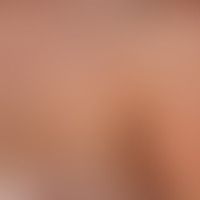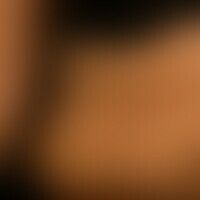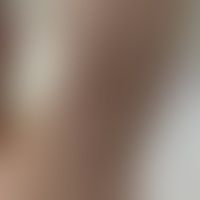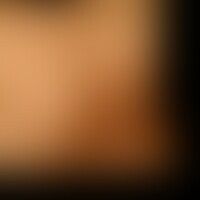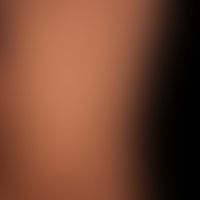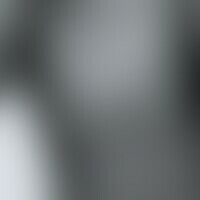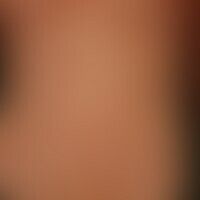
Maculopapular cutaneous mastocytosis Q82.2
Urticaria pigmentosa: Generalized, macular, livid-red to brownish, partly confluent "exanthem-like" clinical picture on the trunk of a 41-year-old woman.
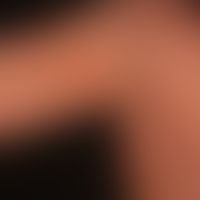
Purpura pigmentosa progressive L81.7
Purpura pigmentosa progressiva. discrete blurred red to red-brown spots. slight itching. occurs after taking ibuprofen due to a flu-like infection.
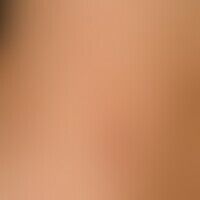
Phototoxic dermatitis L56.0

Neurofibromatosis (overview) Q85.0
Neurofibromatosis segmental, type V Neurofibromatosis. Unilaterally distributed café au lait stains.
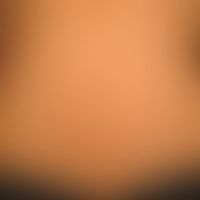
Café-au-lait stain L81.3
Café-au-lait spots: in discrete neurofibromatosis type I. Several medium brown spots in the area of the lower and middle abdomen.
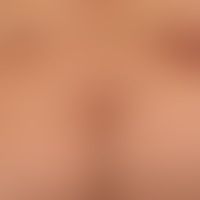
Neurofibromatosis peripheral Q85.0
Type I Neurofibromatosis (peripheral type): Numerous soft papules and nodules; multiple smaller and larger café-au-lait spots.
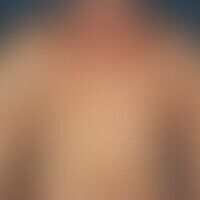
Maculopapular cutaneous mastocytosis Q82.2
Urticaria pigmentosa: Darkly pigmented maculae and papules, spread over the entire integument, existing for years.

Diffuse cutaneous mastocytosis Q82.2
Mastocytosis diffuse of the skin: Disseminated large-area mastocytosis of the skin (type Ia). In addition to the conspicuous yellow-brown spots and plaques, the apparently unaffected skin is slushy thickened, in places also with protruding follicular structures. The occurrence of larger blisters after banal trauma has been reported time and again. No systemic involvement detectable.

Maculopapular cutaneous mastocytosis Q82.2
Urticaria pigmentosa: general view: about 0.5-1.0cm large, disseminated, oval or round, brownish-red spots. only when rubbed, increased redness of the spots with accompanying itching. also in warm showers or baths increased redness and clearly palpable elevation of the lesions. remark: control image 1 year later.
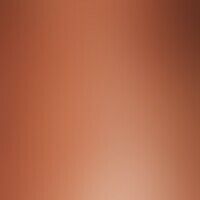
Purpura pigmentosa progressive L81.7
Purpura pigmentosa progressiva. acute episode with dense distribution of punctiform, red, non-push-off spots (bleeding). in addition, extensive brown coloration (hemosiderin deposition) in the area of the lower legs.

Becker's nevus D22.5
Becker-Naevus: Since birth existing, extensive hyperpigmentation in the area of the right hip in a 7-year-old boy; typical for the Becker-Naevus is the bizarre bordering as well as the follicular accentuation in the pigment zones.
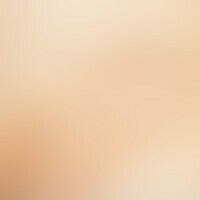
Fixed drug eruption L27.1
Drug reaction, fixed. multilocular FA (1st recurrence in loco) after administration of ibuprofen, 24 h before the first symptoms appear. The present spots are older than 1 week. ring and indicated cocardium structures (see right side of the thigh, initial central bladder).
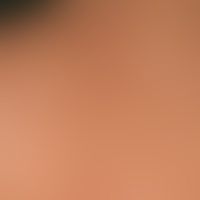
Lentigo solaris L81.4
Solar lentignes: multiple, sharply defined stains of varying intensity in the area of the shoulders after chronic UV exposure
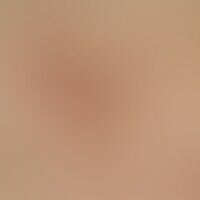
Notalgia paraesthetica G58.8
Notalgia paraesthetica. unspecific picture: Since 15 years persistent, palm-sized, recurrent in irregular intervals (several months), itchy or burning, blurredly limited hyperpigmentation at the right scapula of a 78-year-old female patient; slight scaling and xerosis cutis in the described area.
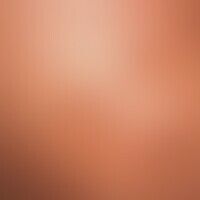
Ashy dermatosis L81.02

Incontinentia pigmenti (Bloch-Sulzberger) Q82.3
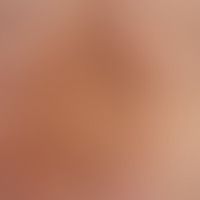
Hyperpigmentation caloric L81.8
Hyperpigmentation caloric. for several years irregular heat applications due to back problems.
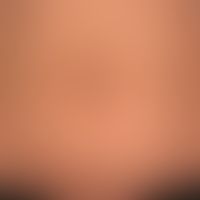
Nevus spilus L81.4
Naevus spilus resembling a cafe-au-lait spot, sharply defined towards the midline, which identifies this pigment nevus as a cutaneous mosaic. Rather discrete internal pigmentation.
